7 Backyard Landscaping Ideas to look Your Outdoor Space Efficiently
Backyard landscaping ideas can transform an outdoor space into a functional and inviting area. Many homeowners look for ideas that improve the look and usability of their yards without requiring too much work.
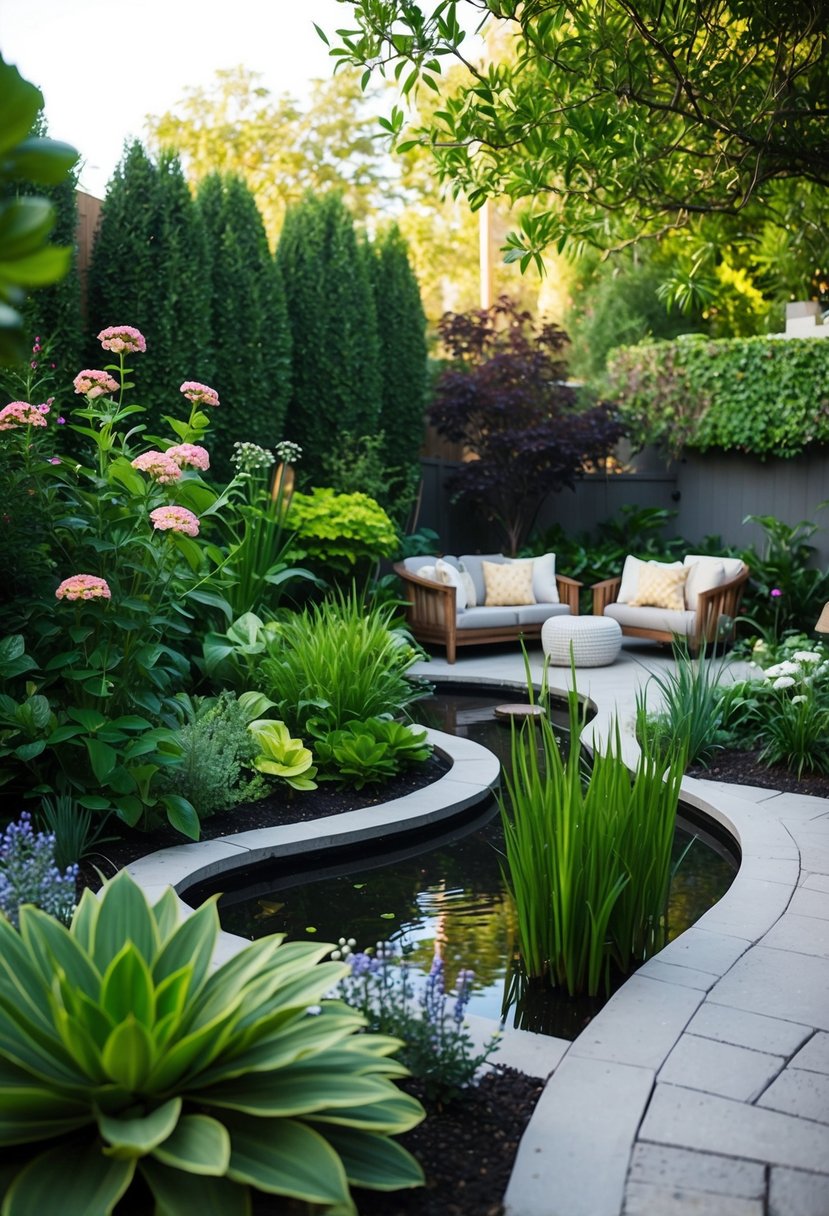
The right landscaping ideas help create a beautiful backyard that fits personal needs and stays easy to maintain. With simple planning, anyone can enhance their outdoor space in practical ways.
1) Build a pergola with climbing plants for natural shade

A pergola adds structure to a backyard and creates a shaded area. It also defines outdoor living spaces clearly.
Climbing plants such as wisteria, clematis, and honeysuckle thrive beautifully on pergolas, offering both natural shade and seasonal bursts of color and fragrance.
Pairing a wooden or metal pergola with flowering vines not only adds charm to your outdoor space but also helps create a cooler, more inviting environment. It’s a simple yet effective way to blend structure with nature, encouraging healthy plant growth while elevating your garden’s visual appeal.
2) Plant native trees and shrubs for low maintenance

Native trees and shrubs are adapted to local weather and soil. This makes them easier to grow and care for. They usually need less water, fertilizer, and pest control.
Choosing native plants also supports local wildlife. They provide food and shelter for birds and insects. Examples include ninebark, black currant, and smooth hydrangea.
Planting native species helps create a natural, lasting landscape. For a full list of easy-care native plants, see the guide on 21 Easy Care Native Landscaping Plants.
3) Create a DIY stone patio for durable outdoor space
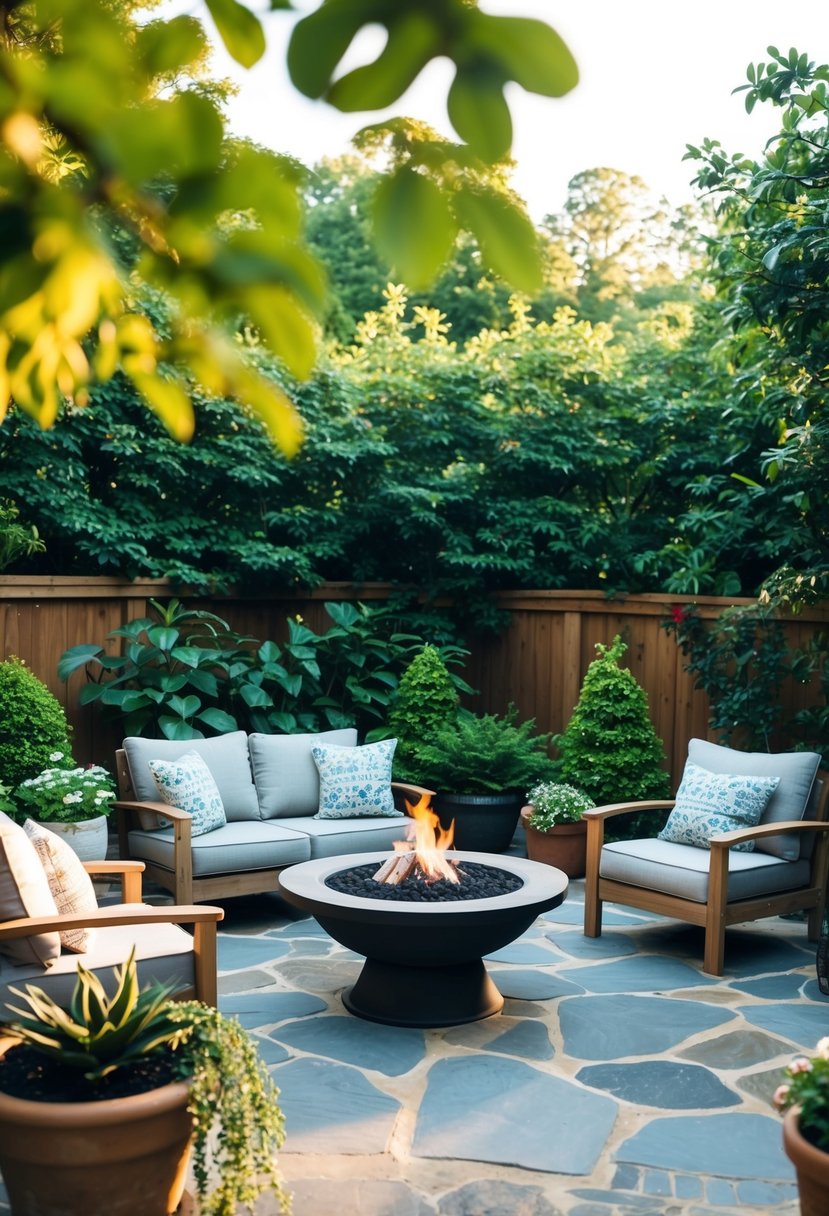
A DIY stone patio offers a strong and lasting surface for outdoor activities. It can be built using materials like concrete paving stones, gravel, and sand. These materials are affordable and easy to work with for most people.
Preparing the ground is key. They remove any grass or debris, then level the area before adding a layer of gravel for drainage. Sand is spread on top to help set the stones securely.
By following simple steps and using common tools, anyone can build a functional and attractive patio. For more details on materials and process, see a guide on building a simple patio using paving stones.
4) Add a mix of perennials and groundcovers for continuous color
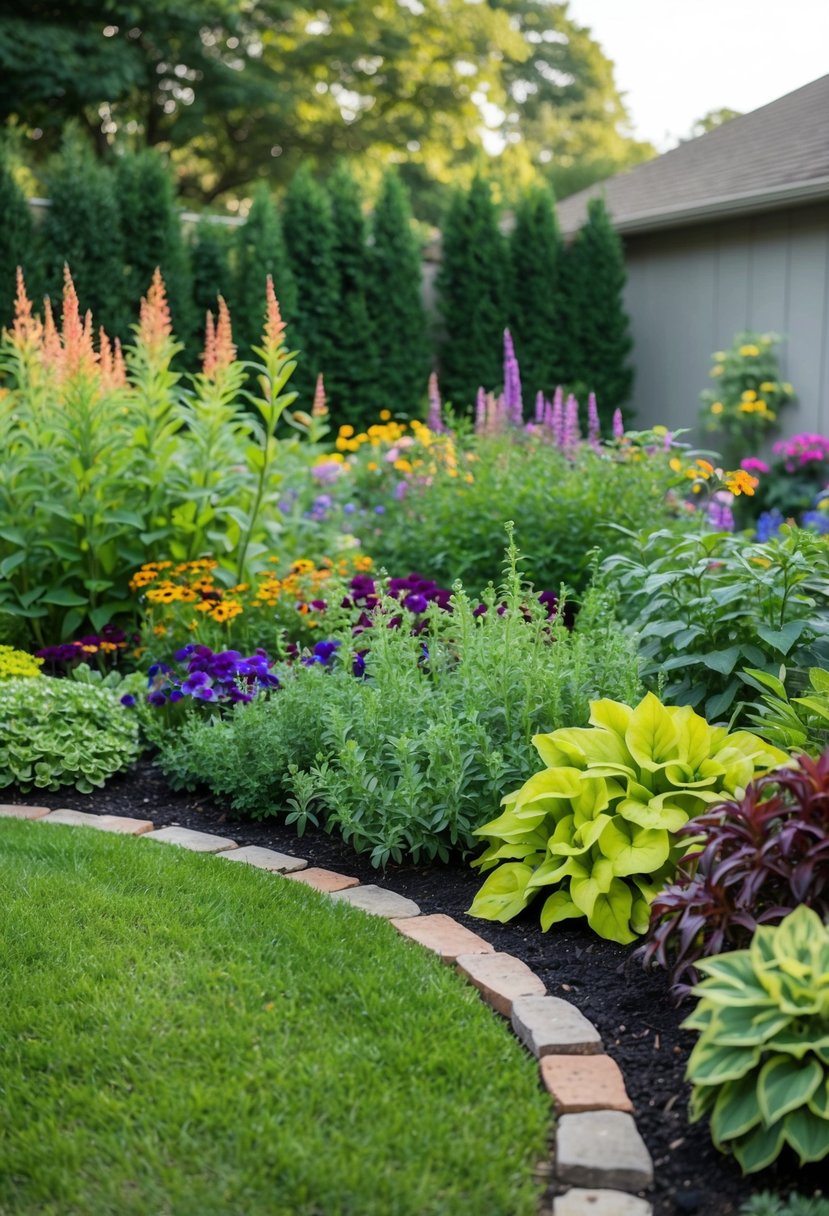
Using a mix of perennials and groundcovers can keep a yard colorful for most of the year. Perennials provide blooms during their growing seasons, while groundcovers fill in bare spots with leaves and flowers.
This combination also helps control weeds and reduces soil erosion. Choosing plants with different bloom times ensures the garden changes but never looks empty.
Incorporating low-water perennials and evergreen groundcovers adds texture and interest through multiple seasons. For ideas on pairing plants, see creative perennial and groundcover combinations.
5) Install a privacy hedge around backyard edges

A privacy hedge is a natural way to block views and create a quiet backyard space. Dense, evergreen plants work best because they keep their leaves year-round.
Hedges like boxwood, holly, or arborvitae grow tall and thick. This helps to cover fences that might not look great and adds a green, living barrier.
Planting a hedge along the edges of the yard creates clear boundaries. It also adds structure and can reduce noise from nearby streets or neighbors. For more details, see ideas on how to use hedges for backyard privacy.
6) Lay fresh mulch to improve soil health and appearance
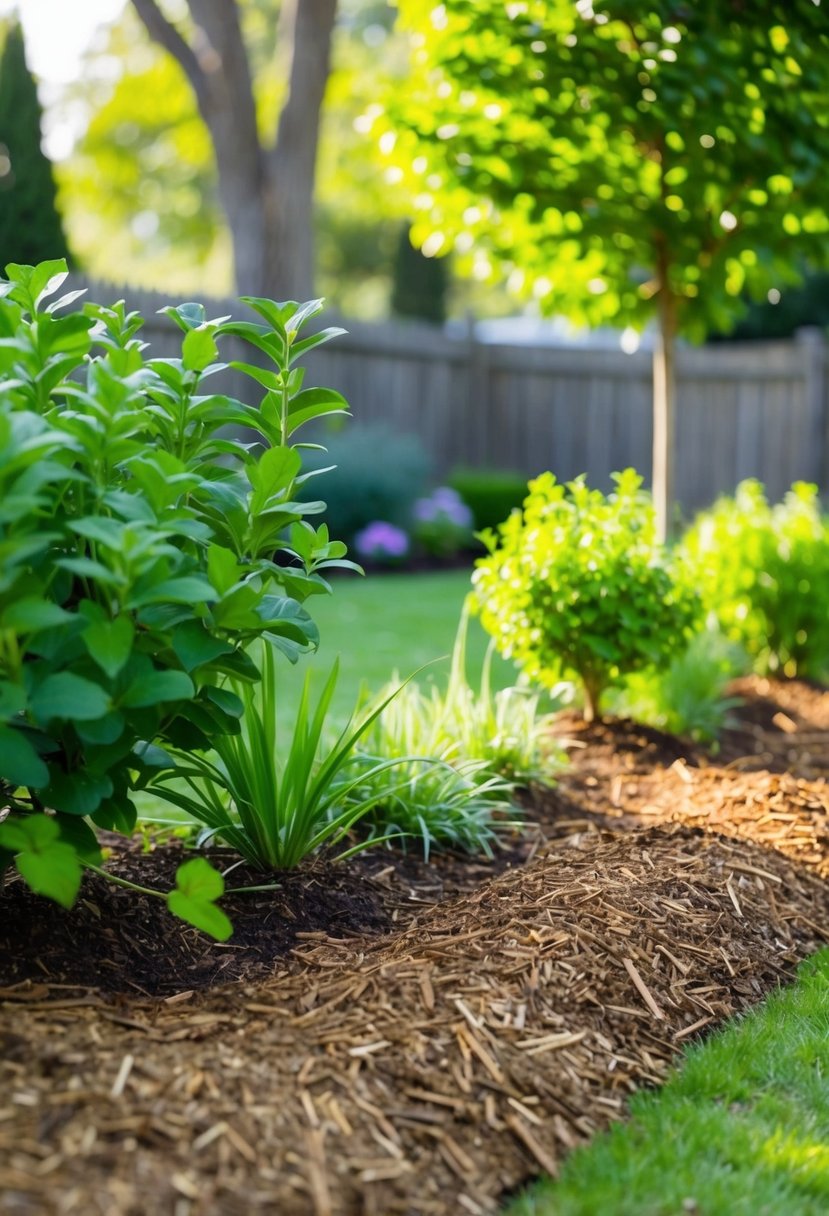
Mulch helps keep soil moist by reducing water evaporation. This supports plant roots, especially during dry periods. It also suppresses weeds, making garden maintenance easier.
As mulch breaks down, it adds nutrients to the soil. This improves soil quality and encourages healthy plant growth. Fresh mulch also gives a neat, polished look to the yard.
Common mulch types include wood chips, pine bark, and leaves. Each option slowly decomposes, benefiting the soil over time. Using mulch is a simple way to boost both soil health and yard appearance, as explained in detail about mulch benefits.
7) Incorporate raised garden beds for vegetables and herbs
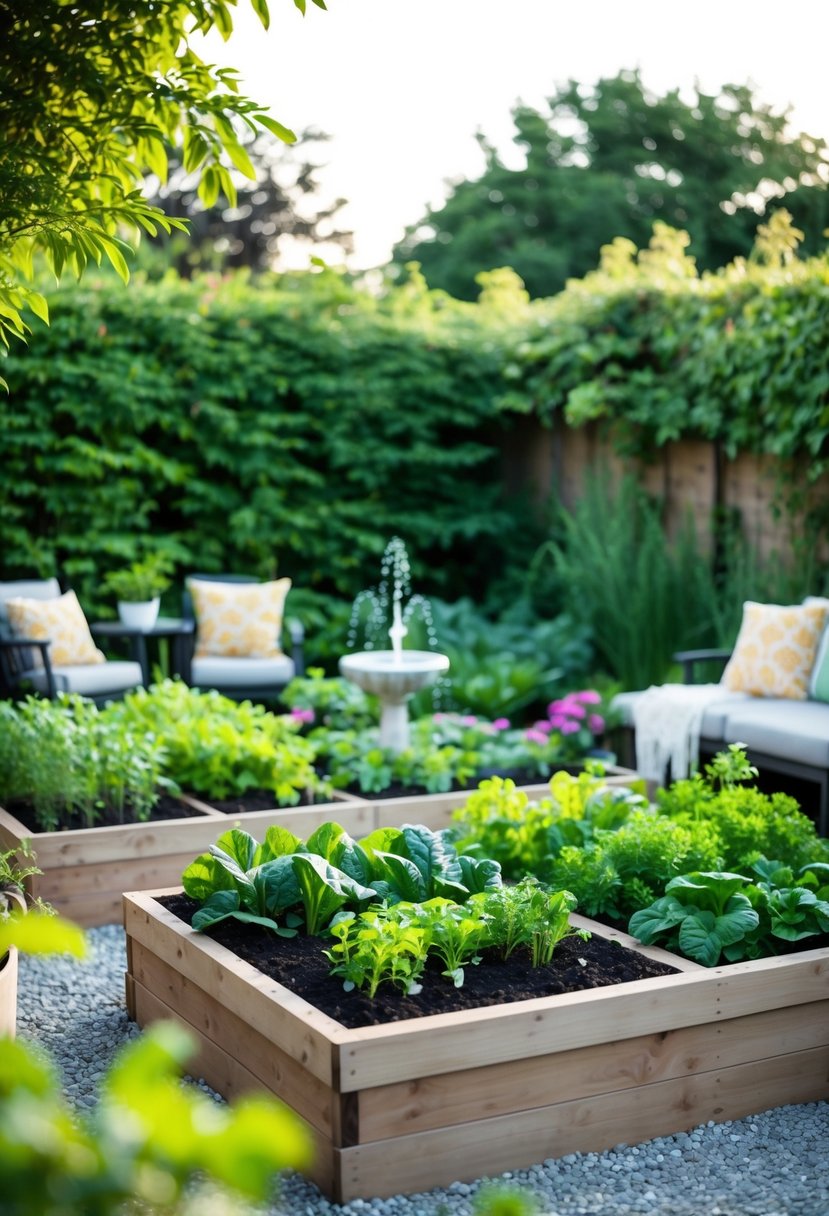
Raised garden beds create a defined space for growing vegetables and herbs. They improve soil drainage and make it easier to control weeds.
These beds can be placed in small or large yards, fitting many garden styles. They also allow for better soil quality since soil and compost can be added directly.
Raised beds can be made from wood, stone, or recycled materials. Using them helps gardeners manage plants more efficiently and can increase yields. More ideas on raised garden beds can be found at HGTV’s raised garden bed ideas.
Planning Your Backyard Transformation

A successful backyard makeover starts with clear steps that define the space and what can be spent. Knowing the size, shape, and existing features, along with a realistic budget, helps guide the project smoothly and prevents surprises.
Assessing Your Outdoor Space
The first step is measuring the whole backyard accurately. Take note of dimensions, sunlight exposure, slopes, drainage, and any fixed features like trees, fences, or sheds.
Create a simple sketch or map with these details. Identify which areas are usable and where improvements will have the most impact.
Consider how the space will be used: entertaining, gardening, relaxing, or playing. This affects the design choices. For example, seating areas need flat, stable surfaces, while garden beds require good sun and soil.
Looking at existing conditions helps avoid costly mistakes like planting in poor soil or blocking valuable sunlight.
Setting a Realistic Budget
A clear budget ensures the project stays on track without overspending. It should cover materials, plants, tools, labor, and unexpected costs.
Start by listing main expenses: hardscaping (paths, patios), softscaping (plants, lawn), furniture, and lighting. Allocate more funds to key features and less to extras.
Set aside at least 10-15% of the total budget for surprises like soil issues or additional materials.
If the budget is tight, focus on simple, impactful upgrades like adding flower beds or seating areas, then expand over time.
Knowing the budget beforehand helps choose the right materials and plants, avoiding regrets later.
More ideas can be found in this guide to simple backyard landscaping ideas.
Maintaining Your Landscape Design

Proper care keeps a backyard looking fresh and healthy through the year. Attention to watering, pruning, and soil health supports the plants’ growth and preserves the design’s structure. Using eco-friendly steps can reduce work while helping the environment.
Seasonal Care Tips
Different seasons call for specific tasks to keep plants strong. In spring, remove dead branches and prepare soil with compost or mulch to boost nutrient levels.
Summer requires regular watering, especially for new or native plants. Early morning or late evening is best to reduce water loss. Prune shrubs lightly to keep shapes but avoid cutting too much.
Fall is a good time to plant new shrubs and add mulch to protect roots from winter cold. Clean up fallen leaves to reduce pests and diseases.
Winter care includes protecting delicate plants with covers or wrapping trunks in cold areas. Limit pruning to avoid damage.
Sustainable Landscaping Practices
Using native plants reduces the need for extra watering and fertilizers since they are adapted to local conditions. This also supports wildlife like bees and birds.
Incorporating mulch helps soil retain moisture and keeps weeds down. Choosing drought-resistant ground covers instead of grass saves water and lowers lawn care needs.
Hardscape features like stone paths and patios reduce grass areas and limit maintenance. Installing rain barrels captures water that can be used later for irrigation.
Proper spacing of plants improves air flow, reducing disease risk and lowering the need for chemical treatments. Using organic fertilizers and avoiding harsh chemicals protects soil health and water quality.
More ideas on these topics are available on low-maintenance backyard landscaping.
Conclusion
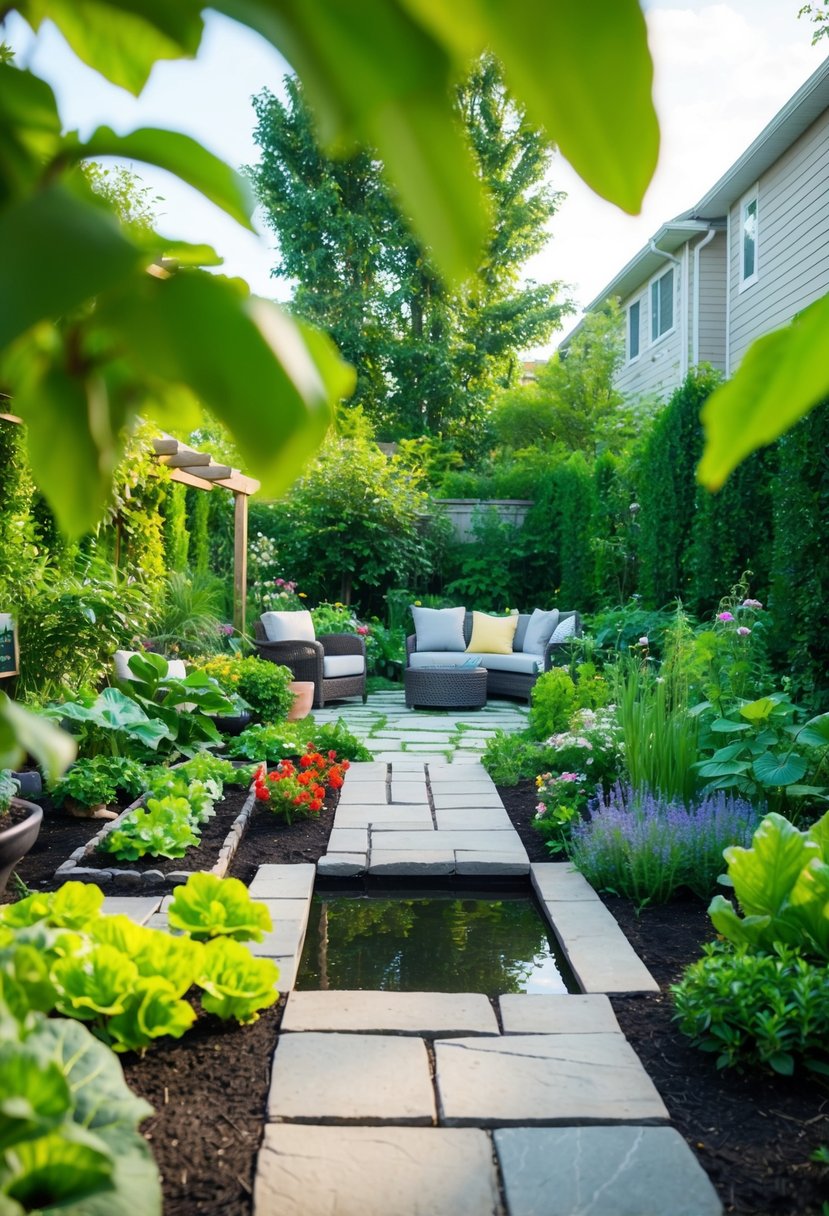
Trying new landscaping ideas can make a backyard more inviting and functional. Simple changes like adding plants or a small garden can create a fresh look without much effort.
Using layers of plants or a lattice fence can help build privacy. This makes the outdoor space feel more like a private room.
Focusing on one feature, like a statement tree or a flower bed, can draw attention and add character. It helps organize the yard and gives it a clear focal point.
Beginners should start with easy steps such as rough sketches or container planting. These methods are low cost and flexible.
Here is a quick list to remember:
- Plan your layout first
- Use plants to create privacy
- Highlight one main feature
- Start small and simple
Each backyard is different, so adapting ideas to fit the space and personal style is important. Taking time to plan and experiment will lead to a balanced and enjoyable outdoor area.
For more basic backyard landscaping tips, see 7 Landscaping Ideas for Beginners.




